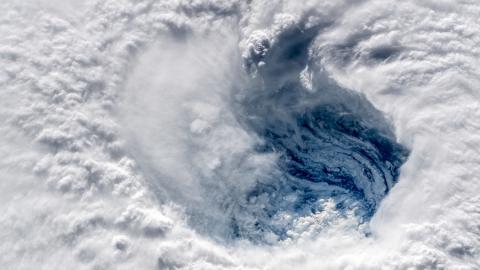Church Admin & Finance, Community Engagement
Dear Churches, In the Event of a Hurricane

In the Event of a Hurricane
More churches in hurricane-prone locations are standing in as storm shelters. Yet many aren’t prepared to protect their own property or members.
Church leaders don’t usually think of their buildings as evacuation shelters – until a storm hits. Unfortunately, the National Oceanic and Atmospheric Administration (NOAA) predicts up to eight named hurricanes in the next year – including four that could reach “major” status.
As hurricane seasons grow longer and more intense, more people in at-risk locations are turning to churches for shelter from the storm. One reason: Many communities are discovering they have a shortage of established shelters in the right locations.
And that’s when many churches discover they’re not really prepared for a hurricane. Our Hurricane Preparedness Guide, available online for any organization, can help churches take practical measures to protect their people and property.
Annual hurricane preparation checklist
During hurricane season, church leaders should ask themselves if they are adequately prepared. Start with these questions:
Consider the risks of providing shelter
Once your church is prepared for hurricane season, church leaders can decide if they want to offer shelter to storm evacuees. It’s important to have the latest legal information before deciding to provide sanctuary.
Housing people in a facility not intended as living quarters can pose a variety of risks and legal liabilities – as some of our policyholders have learned the hard way. Before using your facility as an emergency shelter, consider the following:
Understand local statutes, fire and safety codes
After you’ve discussed the potential liabilities and risks of providing shelter with local legal counsel, ask local municipal authorities about existing restrictions. Some statutes may prevent worship centers from providing temporary living accommodations.
Seek guidance from your local fire department, too. They can conduct a survey of the living area to determine if it is code compliant. They’ll also let you know if you need additional emergency exits, smoke and carbon monoxide alarms or more fire extinguishers.
Prevent problems with clear guidelines
If you’ve decided to offer sanctuary, establish guidelines to help keep evacuees – and your congregation – safe. Spell out policies and procedures for all sanctuary-related activities – in multiple languages, if needed.
Whether or not your church decides to open its doors to people in peril, be sure you’re prepared to weather a hurricane.
Contributed by Ed Hancock, vice president – chief underwriting officer, Church Mutual Insurance Company
Connect to The Network and add your own question, blog, resource, or job.
Add Your Post
Comments
Helpful! Thanks for sharing.
Let's Discuss
We love your comments! Thank you for helping us uphold the Community Guidelines to make this an encouraging and respectful community for everyone.